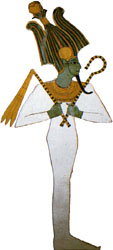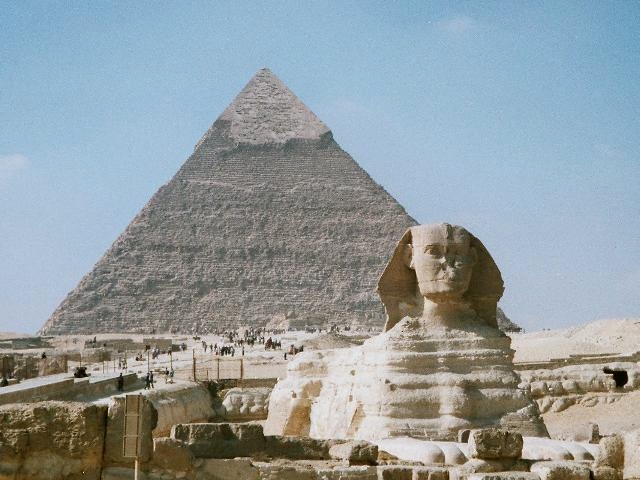 "It seems that she was originally conceived of as the female counterpart of Set. He represented the desert, while she represented the air."
"It seems that she was originally conceived of as the female counterpart of Set. He represented the desert, while she represented the air."Nephthys was an ancient goddess, who was referenced in texts dating back to the Old Kingdom. She was a member of the Ennead of Heliopolis as the daughter of Geb and Nut and the sister of Osiris, Isis and the and wife of Set. When the Ennead and Ogdoad merged, Nephthys was given a place on Ra's boat so that she could accompany him on his journey through the underworld.
Nephthys is the Greek pronunciation of her name. To the Ancient Egyptians she was Nebthwt meaning "the Mistress of the House".
As a goddess of the air, she could take the form of a bird, The Egyptians thought that all vultures were female and that they were spontaneously created from the air. While the care shown by a mother vulture for her child was highly respected, the Egyptians also recognized that vultures fed on carrion and associated them with death and decay. As a result, Nephthys became a goddess of death and mourning.
Later myths claimed that she was the mother of Anubis by Osiris. This came about because Anubis' position as the god of the dead was usurped by Osiris.
According to one myth Nephthys disguised herself as Isis to get the attention of her neglectful husband Set, but instead seduced Osiris (who apparently did not realise that it was Nephthys).
Isis and Nephthys were very close despite Nephthys' alleged infidelity with Osiris (the husband of Isis) and her marriage to Set (the murderer of Osiris).
Nephthys protected the body of Osiris and supported Isis as she tried to resurrect him. The goddesses are so similar in appearance that only their headdresses can distinguish them and they always appear together in funerary scenes.
Together Isis and Nephthys could be said to represent day and night, life and death and growth and decay.




